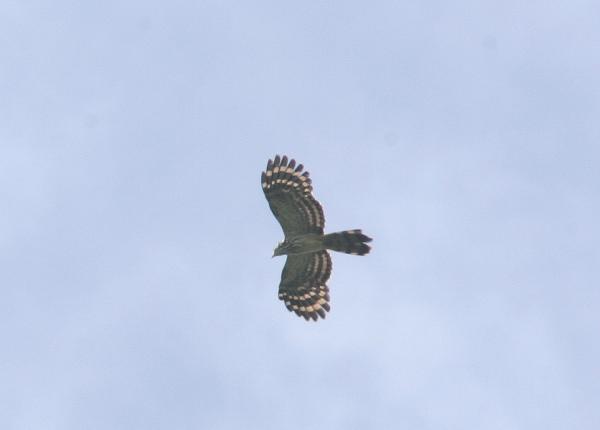Did You Know?
- Sadly, this species has been persecuted for its primary and tail feathers, which are used for decorative purposes
- Very little is known about the breeding biology of this species
How The Peregrine Fund is Helping
Though The Peregrine Fund doesn't work directly with Long-tailed Honey-buzzards, our efforts in scientific research, habitat conservation, education, and community development help conserve birds of prey around the world. We also supply literature to researchers from our avian research library, which helps scientists around the world gather and share important information on raptor conservation. We also run the Global Raptor Impact Network which gives raptor researchers tools to more efficiently conduct their own studies while contributing to a global program. GRIN also provides citizen scientists a way to participate in raptor science and conservation.
Where They Live
Found in New Guinea, the western Papuan islands, and Aru Island, the Long-tailed Honey-buzzard frequents forests, forest edges and nearby clearings.
Why They Need our Help
The Long-tailed Honey-buzzard is categorized as a species of Least Concern. Though it is considered to be fairly common throughout its range, populations are suffering from deforestation and human persecution.
What They Eat
This lovely raptor feeds mainly on insects, including wasps and wasp larvae, ants, and grasshoppers. It will also feed on tree lizards, birds, and bird eggs, small mammals, and sometimes young domestic fowl. When this species is on the hunt, it might be seen soaring low over the canopy in search of prey. When hunting in the forest, it moves from perch to perch, searching for prey near tree trunks and branches. It sometimes quarters over open areas, similar to how harriers hunt.
Nests, Eggs, and Young
There is very little information about the breeding habits of the Long-tailed Honey-buzzard. Researchers know that the species builds a stick nest high in a tree, or on a cliff ledge. Breeding activity has been observed during the late wet season and through much of the dry season. One known nest contained one nestling. Apart from this scan information, not much else is known.
Long-tailed Honey-buzzard and the World Center for Birds of Prey
The World Center for Birds of Prey offers fun ways to learn about birds of prey. Interactive activities, tours, interesting videos and a children's room with activities from coloring sheets to quizzes to costumes and a touch table are available for the curious mind. We also have several birds of prey on display year-around. Knowledgeable staff and volunteers are on hand to answer any questions you may have about Long-tailed Honey-buzzards or any other birds of prey.
References:
Debus, S., G. M. Kirwan, and J. S. Marks (2020). Long-tailed Honey-buzzard (Henicopernis longicauda), version 1.0. In Birds of the World (J. del Hoyo, A. Elliott, J. Sargatal, D. A. Christie, and E. de Juana, Editors). Cornell Lab of Ornithology, Ithaca, NY, USA. https://doi.org/10.2173/bow.lthbuz1.01
Global Raptor Information Network. 2022. Species account: Long-tailed Honey Buzzard Henicopernis longicauda. Downloaded from http://www.globalraptors.org on 27 Oct. 2022









